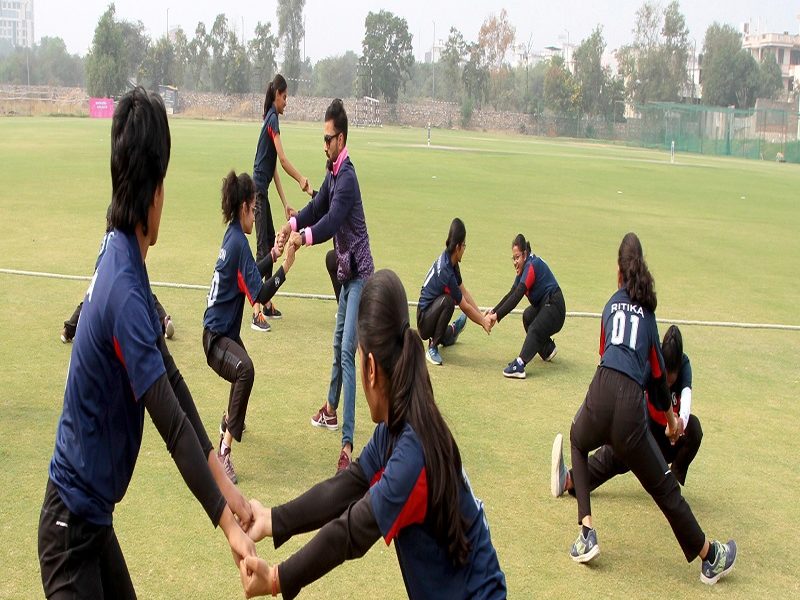Agile and Cricket

To comprehend the similarities between the concepts of cricket and Agile, it is important to first understand what Agile is.
In the corporate world jargon, Agile refers to an approach to project management that is used in software development. It is the ability to create and respond to change in order to succeed in an uncertain and turbulent environment. It ensures agility, adaptability, and flexibility during the process of software development. Teams implement the Agile method to navigate the unpredictable nature of software construction.
However, the concept of Agile goes far beyond software. This is where cricket and its similarities come in.
As unbelievable as it may seem, there are many similarities between Agile and England’s national summer sport. The very primary similarity is that both cricket and Agile have players who are instilled with a sense of mission and a desire to win. While there are strategy and review sessions during cricket, and teamwork and leadership are much valued, so it is the same with the business world. In both, team players are mission-focused, and both take time out for “huddles” to plan, strategize and review. Teamwork and strong leadership are just as important in cricket as in Agile teams.
Just like every cricket team has a wicketkeeper, all Agile teams have the Agile Business Analyst. While wicketkeepers stay very focused in order to take every ball that comes their way, Agile Analysts are always mindful about designing and implementing strategic-focused activities and ensure all communications with the product owner are effective and productive.
In a cricket match, when your team is batting, you may be required to bring drinks to the batsmen if so required. If a batsman gets injured, you may go in as a runner or a replacement to help him out. If a player is injured, you may go in as a substitute fielder. Similarly, in an Agile sprint, every team member must have each other’s back. If one member is struggling, others need to chip in. Every person should do whatever is needed to get the sprint completed.
The captain in a cricket match acts as an on-ground coordinator within the match. While fielding, he keeps tracks of the bowlers and overs. He ensures the timeline is adhered to for every over being bowled. He rotates the bowling based on the situation on the ground. He helps in arranging the field placements for a bowler. The captain need not be the oldest or most experienced or most skilled member in the team. On the contrary, he is a person who can get the team to work with each other, in a cohesive manner. There can be different captains for different formats of the game. This is much like the role of a Scrum Master in an Agile team. The scrum master is a ‘master of ceremonies’. He facilitates the entire sprint, and the most important role of a scrum master is to get the team working with each other. And like in different formats of cricket, the scrum master can be changed from one sprint to another.
The sprint planning meeting is much like a pre-match strategy session. The team comes together and discusses how they should play the next match based on the current situation and the resources they have in hand. The daily Agile stand-ups are like the regular drinks breaks during a cricket match. The team gets a chance to come together and catch up with each other. The sprint demo is similar to the award ceremony where the efforts of the team are recognized and appreciated by all. The sprint retro is the post-match de-brief with discussions of which aspects could be improved and which should be further honed.
Agile can also make use of a Cricket Scaling Model to describe its schedule and duration. Level One (or “Twenty20”) refers to a short burst of development, normally incremental in nature, providing a significant result at the end of it. Level Two (or “One-Day”) refers to a longer development project that may require the team to work through it day and night. Level Three (or “Test”) refers to a large and complex development project which requires a great amount of discipline to achieve the desired results.
Just like delivering too many balls in an over (in the form of Extras) can be detrimental to the bowling team, delivering too many projects in an Agile Over may result in a team burnout. It is certainly not advisable to overwork the Agile Team. Similar to the game of cricket, if a bowler (or an “Architect” in Agile terms) is found to be delivering too many poor or unfair deliveries, they can be changed, and the team can be rotated to find a better match that meets the requirements of the hour.
And in the end, when the entire team comes together and puts in the best of its efforts, the results achieved are always favourable, as in an Agile Sprint so in a cricket match.
Join the Conversation on Hive Learning
Join our Hive group, a free online community in which you can access insights into the secrets of high performance in business and sport. You can also speak to Manoj and Simon directly, and get regular updates on fresh ideas and insights.